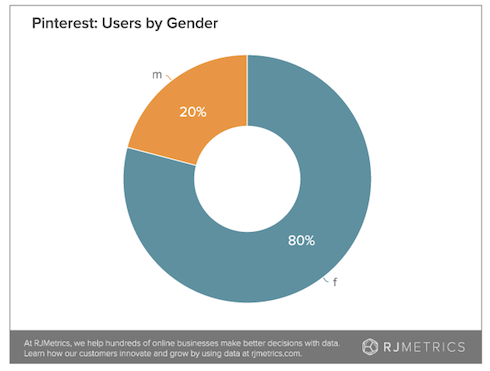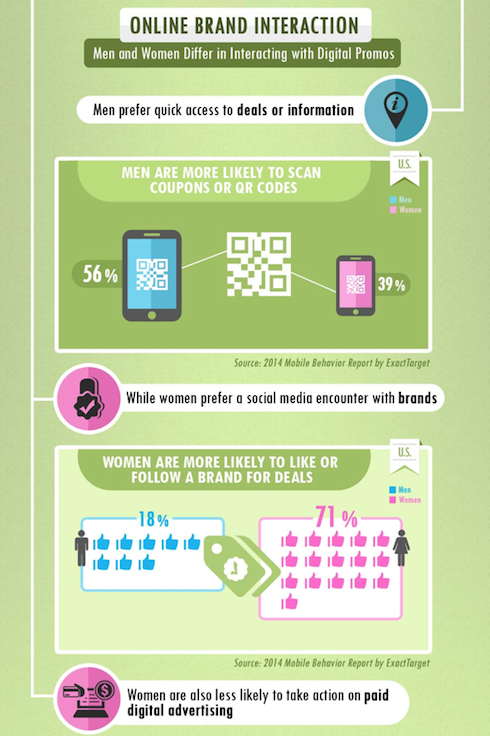By adaptive - May 13th, 2014

Women continue to engage with visual content, with Pinterest showing huge traffic that all brands can leverage
As social media cements itself as a commercial channel, brands are now asking which social networks are gaining the greatest loyalty. According to research from RJ Metrics, if your corporation is focused on women, Pinterest continues to be the network to gain a presence on. According to their figures, 84% of women are still active on the network after four years, with over half of this group logging in at least once a day.
RJ Metrics concluded: “This is a new world for Pinterest, and the data indicates they are set up to succeed. Armed with best-in-class user retention and engagement, and with women making 85% of consumer purchasing decisions, Pinterest is set up to be a major player in online commerce. Is it possible that it will dethrone Google as the starting place for product search?”

Q4 last year was pivotal, as Pinterest overtook Facebook in the UK referral revenue stakes. Of course the use of pins is highly subjective, but does indicate that the commercial value of this group is growing. Female US Pinterest users spend upwards of $180, with comparable Facebook user only $80. For brands the writing – or the images – are on the wall. Female Pinterest users are a highly active group that has money to spend and is willing to do so.
Word-of-mouth (WOM) has also gone through somewhat of a renaissance thanks to social media. McKinsey took a close look at WOM last year and concluded: “WOM equity empowers companies by allowing them to understand WOMs relative impact on brand and product performance. While marketers have always known that the impact can be significant, they may be surprised to learn just how powerful it really is.
“The flexibility of WOM equity allows us to gauge the WOM impact of companies, products, and brands regardless of the category or industry. And because it measures performance rather than the sheer volume of messages, it can be used to identify what’s driving—and hurting—WOM impact. Both insights are critical if marketers are to convert knowledge into power.”
If we focus on women, once again we find that WOM is highly prized and feeds into their propensity to use Pinterest to share the products they have found. This drive clearly has a major commercial component. Research from the Ladies Home Journal indicates that women trust WOM recommendations and will act upon this information. The power of peer recommendation has been leveraged by corporations for decades, but the immediacy that platforms like Pinterest offers is ensuring WOM is gaining momentum as the channel for brand advocacy.
FinancesOnline also revealed: “Surprisingly, women ignore paid advertising more often than men. This makes sense because women in general are more conscious of their social circle and ads are intrusive strangers."

Burst Media concluded: “The online mom is mobile, savvy, influential and decisive. Marketers must absolutely make sure they follow the cardinal rule of advertising: know thy audience. Online moms cover a wide spectrum; there is no such thing as the ‘typical mom.’ Marketers that leverage digital media most effectively use the right channels – and the right creative spanning rich media, video, mobile and social – to reach their target mom.”
Clearly when it comes to Pinterest the overwhelming group to focus on is women. Hubspot have a number of steps to measure WOM:
- Know your audience and develop personas that are so specific they’re bordering on the obsessive!
- Know everything there is to know about your industry, products and services.
- Build a very close social media community in the networks that resonate with your target audience.
- Identify who the influencers are in your community and in other social media spaces where you’d like to get noticed.
- Find out what influences your influencers and where.
- Don’t restrict what people can say but try and guide it instead.
There is certainly a referral and therefore a commercial shift away from Facebook to Pinterest when female consumers are considered. Brands that can develop highly visual assets will be able to engage with this group, that will in turn communicate across their peer groups via WOM and brand advocacy. Pinterest may have been slow to gain traction in the social media space, but it has now shown its commercial value that no corporation can now ignore.
